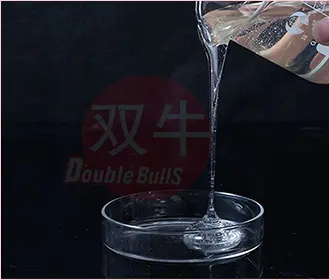In the field of building materials (such as mortar, concrete, putty, etc.), the core function of water retaining agents is to reduce the rapid evaporation of water and ensure that the building materials maintain sufficient humidity during the setting and hardening process. The difference in water retention mechanism between cellulose ether and ordinary cellulose mainly lies in their molecular structure, solubility, and mode of action with water. Specific analysis can be carried out from the following three aspects:
1、 The essential difference between molecular structure and water binding ability
The molecular chain of ordinary cellulose (such as natural plant cellulose) is formed by connecting glucose units through β -1,4-glycosidic bonds. Although the molecular structure contains a large number of hydroxyl groups (- OH), these hydroxyl groups mostly interact with each other in the form of intramolecular or intermolecular hydrogen bonds, forming tight crystalline regions. This structure results in poor solubility of ordinary cellulose in water, with only a small amount of water absorption and expansion, and the water mainly adheres to the surface of the fibers or is wrapped in the pores formed by the interweaving of fibers, belonging to the "physical wrapping water retention". Due to the lack of active groups that can form stable bonds with water molecules, ordinary cellulose has weak water retention ability and is easily affected by environmental temperature and humidity, resulting in rapid loss of moisture.
Cellulose ether is the product of etherification modification of ordinary cellulose, which introduces ether bonds (such as methoxy, hydroxypropyl, hydroxyethyl, etc.) on the molecular chain. The introduction of these ether bonds breaks the crystalline structure of ordinary cellulose, making the molecular chains more flexible while increasing the hydrophilicity and solubility of the molecules. Cellulose ether can quickly dissolve in water and form a transparent viscous solution. The hydroxyl and ether bonds on its molecular chain can form strong hydrogen bonds with water molecules, firmly adsorbing water around the molecules and forming a stable "hydration shell". This dual effect of "chemical adsorption+physical viscosity" makes the water retention capacity of cellulose ether much better than that of ordinary cellulose, and the water retention effect is more stable and less susceptible to external environmental factors.
2、 Differences in the modes of action in building materials systems
In building materials (such as cement mortar) systems, ordinary cellulose mainly exists in the form of solid fiber particles, forming a loose network structure through the interweaving of fibers, and encapsulating water in the network pores. However, due to the poor compatibility between fibers and aggregates such as cement and sand, as well as the insufficient stability of the network structure, fibers are prone to agglomeration or settlement during the mixing and construction of building materials, resulting in loopholes in the water retention network. Moisture can easily penetrate or evaporate through these loopholes. In addition, ordinary cellulose cannot regulate the rheological properties of building materials, and the flowability and workability of building materials are poor, further affecting the effectiveness of water retention.
After cellulose ether dissolves in building material systems, it forms a uniform viscous solution that fills the gaps between aggregates such as cement and sand, forming a continuous and stable viscous network. On the one hand, a viscous network can slow down the evaporation rate of water and prevent it from penetrating downwards due to gravity; On the other hand, the molecular chains of cellulose ether can adsorb with the hydroxyl groups on the surface of cement particles, forming a protective film on the surface of cement particles, delaying the hydration reaction rate of cement, and avoiding premature consumption of water due to rapid hydration of cement. At the same time, cellulose ether can improve the rheological properties of building materials, increase the viscosity and yield value of mortar, reduce bleeding and segregation during construction, further enhance the water retention effect, and ensure that building materials always maintain sufficient moisture during the setting and hardening process, thereby improving the strength, durability, and construction quality of building materials.
3、 Differences in water retention efficiency and applicable scenarios
From the perspective of water retention efficiency, the water retention rate of ordinary cellulose is usually low. When the amount added to mortar reaches 3% -5%, the water retention rate can only reach 60% -70%, and over time, the water retention rate will rapidly decrease. Its applicability is relatively limited, only suitable for simple building materials with low water retention requirements (such as ordinary interior wall putty, low strength mortar), and it needs to be used in combination with other water retention components (such as starch ether) to meet basic water retention needs.
The water retention efficiency of cellulose ether is high, with an addition amount of only 0.1% -0.5% in mortar, and a water retention rate of over 90%. Some high-performance cellulose ethers (such as hydroxypropyl methyl cellulose ether HPMC) can even achieve a water retention rate close to 100%. Due to its excellent water retention performance and multifunctionality, cellulose ether is widely used in building materials fields that require high water retention, such as high-strength concrete, exterior wall insulation mortar, tile adhesive, self leveling mortar, etc. In these scenarios, cellulose ether not only ensures the water retention effect of building materials, but also improves their workability, crack resistance, and durability, becoming the core component of building material water retention agents. However, ordinary cellulose is difficult to meet the high demand for building materials due to its insufficient water retention capacity.


TEL:+86 (0311) 8444 9786
Email:sales@double-bulls.com
Email:Export@double-bulls.com
Address:No.9 Weisi Road, Jinzhou City Eco-nomic Development Zone, Shijiazhuang City, Hebei Province.

Website

Brochure

Video